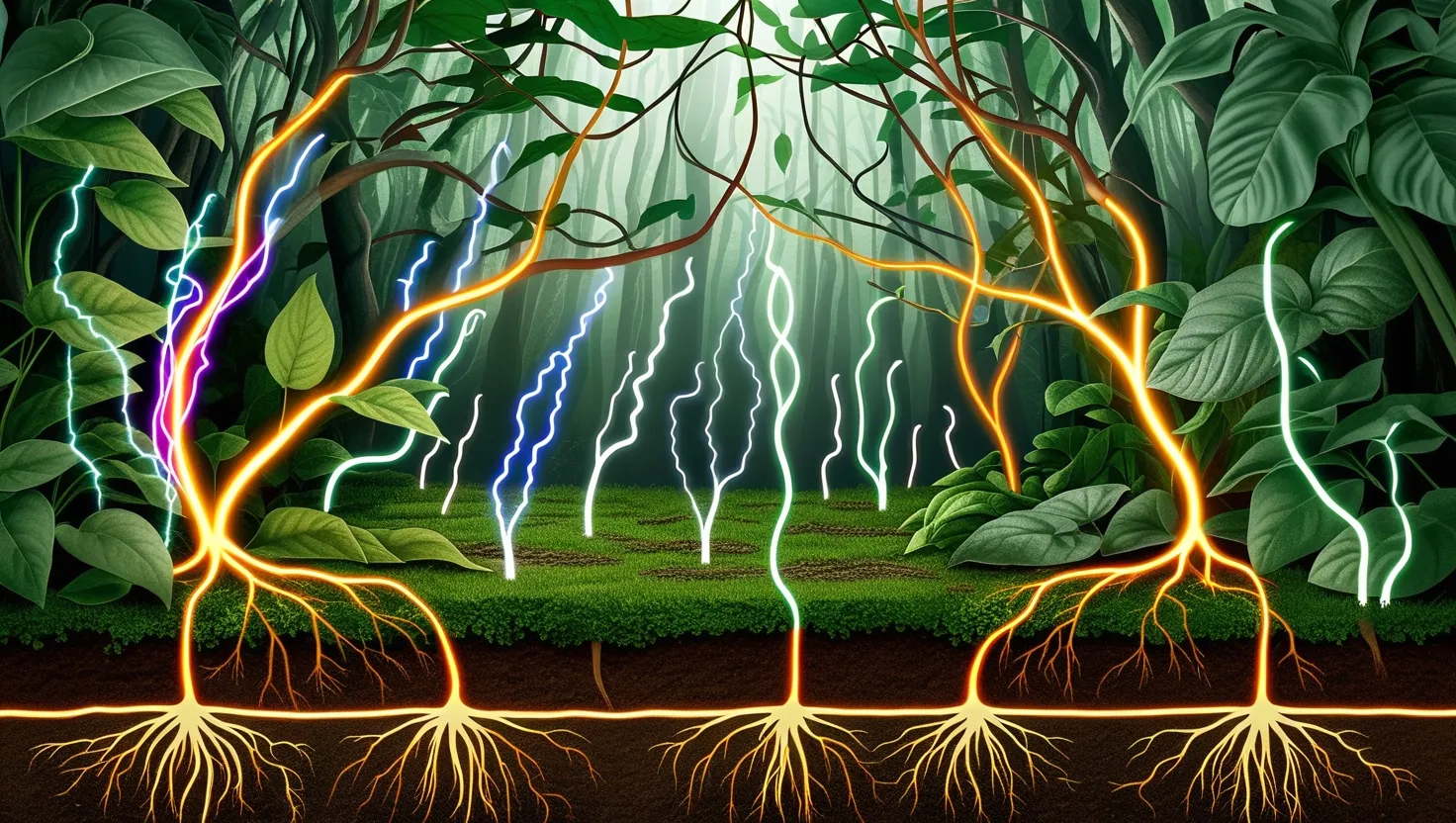Imagine you’re strolling through a forest or sitting quietly in your backyard garden. What if I told you these green beings all around you might be busy trading messages, recognizing their relatives, or even remembering past events? Plants display a suite of sophisticated behaviors, quietly hinting at something close to what we usually call intelligence—although it looks nothing like a mammal’s quick reflexes or a bird’s problem-solving skills.
Let’s start with electrical signaling. When a tree branch snaps or a leaf is nibbled, some plants don’t just sit idly by. Inside their stems and leaves, rapid electrical impulses shoot along their internal vascular “wires,” reminiscent of primitive neural networks. These signals can trigger defenses, like flooding leaves with foul-tasting chemicals or toughening cell walls. What’s especially intriguing is that these electrical surges aren’t random or isolated. They appear to carry context—severity, location, and timing of the injury. We’re only beginning to map this hidden circuitry. Could it be that evolution, lacking nerves, invented its own style of information processing? Sometimes I wonder whether these electrical patterns might function as a kind of language among plant tissues.
“To define intelligence in terms of what a brain does is to design the answer in advance.” – Michael Pollan
Then there is sound. Many would scoff at the idea of plants picking up vibrations, yet mounting evidence says otherwise. In carefully controlled lab experiments, scientists have exposed plants to the whisper of caterpillar jaws, the thrum of a bee’s wings, or even the frequency of falling rain. The plant’s response? Sometimes it ramps up bitter compounds, sometimes it slows water loss. Somehow, leaves and stems contain cells sensitive enough to discriminate these subtle physical cues from plain old wind. What could it mean for a stationary organism to “hear” its enemies, or even the arrival of rain miles away? Are we misunderstanding their silence for unawareness?
If you’ve ever touched a Mimosa pudica and watched it quickly fold its leaves, you know plants can react remarkably fast for something rooted in place. But play this trick a dozen times, and you might notice the show stops—the plant has “learned” your touch isn’t dangerous. Researchers kept up this routine and months later, even after being left alone, the plant remembered not to overreact. No nerves. No brain. Yet, somewhere in its network of cells, it stores the memory of harmless encounters. Does this count as a form of learning? How do bundles of living cells remember at all?
“The greatest mysteries are not at the edge of knowledge, but at its center.” – Marilynne Robinson
Now let’s dig below the soil’s surface. Roots don’t just drink and anchor. In crowded garden pots, some seedlings push roots away from relatives but aggressively tangle with strangers. Trees in a forest, tethered by a vast network of fungal threads, swap sugars, warnings, and – in some species – even favor kin over unrelated neighbors. The ability to distinguish family from foreigner seemed impossible in simple plants, yet repeated studies now confirm it. Does this root discrimination rely on secreted chemical ID tags, electrical cues, or perhaps even mechanical touch? Could kin recognition serve as an ancient blueprint for the emergence of cooperation in more complex life?
If plants sense and analyze, don’t be surprised if they also “talk.” When insects bite, many flowers and leaves emit a specific cocktail of volatile chemicals into the air. These aren’t just random puffs. Neighboring plants decode which mix means “aphids are here!” versus “caterpillars on the move!”—sometimes responding defensively before the attackers arrive. Scientists have begun to catalog these airborne warnings like the earliest field linguists piecing together lost languages. What’s more, some of these scents summon insects that prey on the plant’s enemies, turning the tables on would-be pests. We tend to think of communication as barking, singing, or beeping, but here’s messaging of a kind most animals can neither perceive nor understand.
“Nature never hurries. Atom by atom, little by little she achieves her work.” – Ralph Waldo Emerson
Watch a climbing vine in slow motion, and you’ll see another puzzle. Tendrils sway, pause, and circle, seeking a support. When multiple potential hosts are nearby, the vine “chooses” the most promising target—sometimes changing course mid-growth if a better option appears. It’s easy to attribute this to reflex or genetics, but the efficiency and adaptability rival some animal foraging behaviors. How do rootless organisms integrate mechanical, chemical, and light cues (sometimes simultaneously) into a unified strategy for survival? Could the way a plant “decides” where to grow be compared to problem-solving in the animal world, only stretched across days or weeks instead of seconds?
Throughout history, we’ve drawn a bright line between the animal mind and the vegetative. But as the evidence grows, the gap narrows. The behaviors of plants—once dismissed as mere reflex—now increasingly appear purposeful. Not purposeful in a human sense, but deeply adapted for challenge and change. The signals and strategies are slower, sometimes invisible, and easily overlooked. Still, they show complexity we once thought unique to brains and neurons.
Consider the idea that plants might operate according to a radically different scale of experience, one not captured by our senses or timescales. They react, remember, and cooperate through mechanisms honed over millions of years. What would it mean for our view of intelligence if memory and choice can exist outside the realm of neurons and synapses? If a forest, through shared root-fungi networks, is constantly shuffling information and resources among its members, how far from a community mind is that? Are we missing out by insisting that true intelligence must mirror our own?
“There are more things in heaven and earth, Horatio, than are dreamt of in your philosophy.” – William Shakespeare
Could the realization that plants are active, responsive, and communicative change how we relate to them? As gardeners, farmers, and scientists, might we start asking what a field of soybeans “knows” about drought, or what a patch of garden peas “remembers” from pest attacks last year? Can we imagine a world where the hidden social lives of plants inform agriculture, conservation, or even robotics? These are more than philosophical musings—they touch food security, ecological restoration, and our sense of connection to the web of life.
The more closely we observe, the more questions bloom. What other strategies have evolved, unnoticed and undetected, in the green world all around us? Will future findings erase the final border between thinking and growing, or will they only deepen the mystery of plant life—proving, once again, that life finds endlessly novel solutions to the problems of survival?






